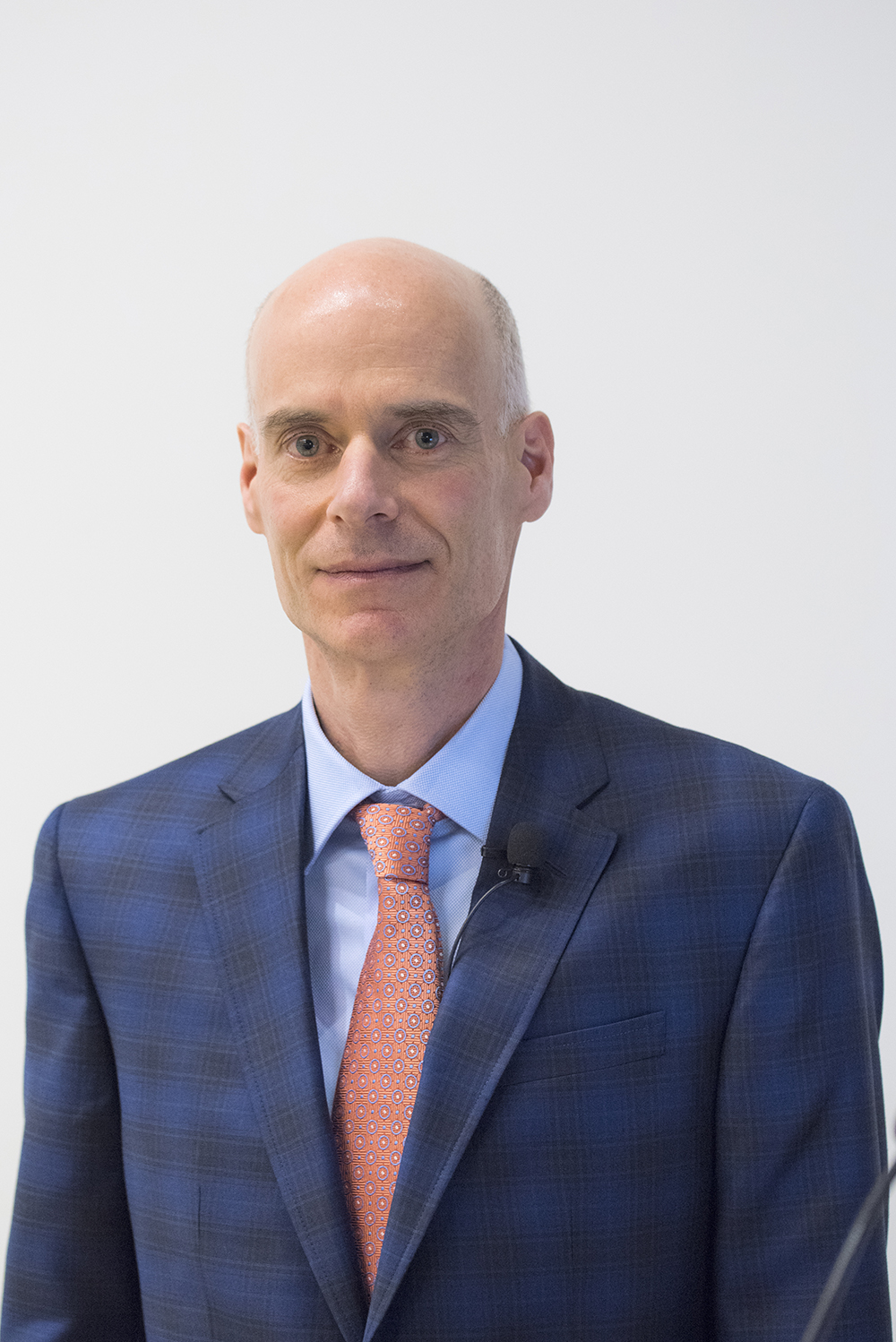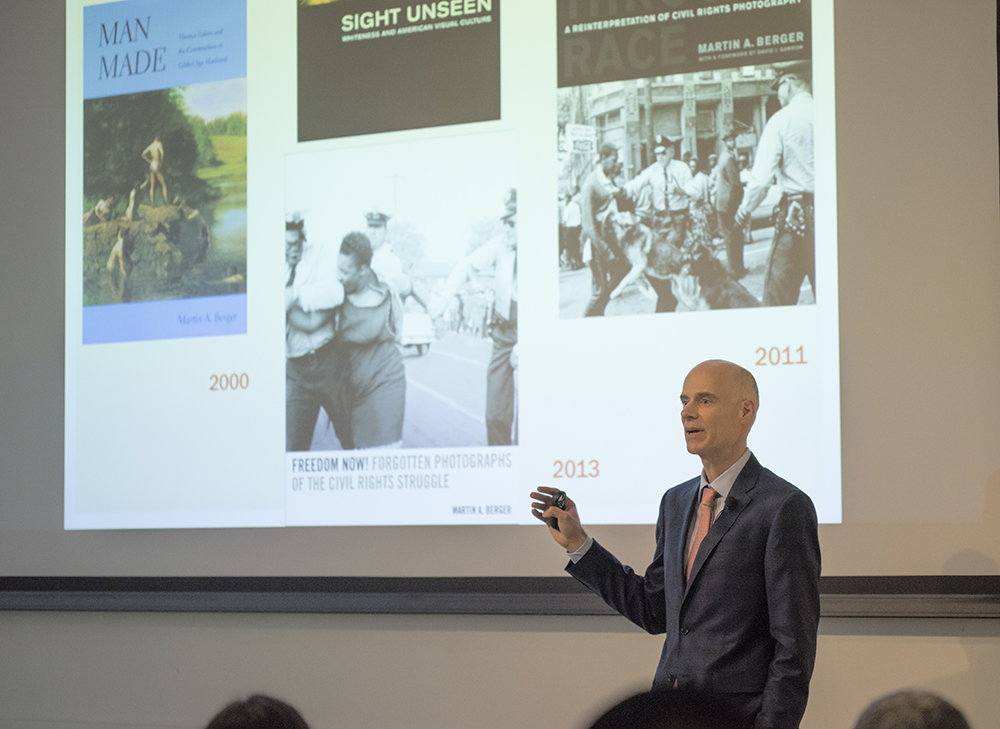
Following the spring semester, Dean of Faculty Lisa Wainwright will return to teaching full time in the Department of Art History, Theory, and Criticism at the School of the Art Institute of Chicago (SAIC). According to an email sent on February 2 by Provost Craig Barton to the student body, the search committee for Wainwright’s replacement has chosen three candidates to replace her (the initial email did not name the candidates, referring to them simply as Candidate 1, 2, and 3 respectively).
Candidate 1, Martin Berger (who was identified in a second mass email alongside a link to a Google Doc containing his CV), introduced himself to faculty and students during a candidate presentation on February 15.
Berger, who currently serves as an Associate Vice Provost for Academic Affairs and a Professor of History of Art and Visual Culture at the University of California Santa Cruz, explained that his decision to pursue an administrative position came after realizing he could “make the kinds of changes that make the lives of students and my fellow teachers better.”
With three books under his belt, Berger confidently broke down his art practice, which focuses on examining images in art and culture that visualize the constructs of race and gender. He emphasized the need to view whiteness as an overarching lens that Europeans see through. He described his practice as, “making visible things that have otherwise been invisible.”
Using an image by civil rights-era photographer Bill Hudson, Berger demonstrated the thesis of his most recent book, “Seeing Through Race: A Reinterpretation of Civil Rights Photography.” As faculty and students watched, Berger asserted that art images — and how they were framed in the media — demonstrate the vast differences in the way that white and black people experienced the Civil Rights movement.
“Structural change is what we need in society,” explained Berger. “That is why I’m interested in administrative work.”
In terms of administrative control, Berger envisions a school environment that’s efficiently run without administrative action interfering in the classroom. Berger seemed to echo this sentiment when discussing academic freedom, explaining that “academic freedom is a paramount value of any institution. … Professors need academic freedom in their teaching so long as it doesn’t harm students.”
Following a presentation on his practice, Berger launched into his understanding of the challenges of working at SAIC, as well as the reasons he wants to take those challenges on. Berger noted the importance of international students, SAIC’s relationship to Chicago Public Schools, and SAIC’s public support of diversity on their website.

Berger spent ample time discussing student debt and students’ ability to get jobs after graduation. He emphasized an interest in providing strong liberal arts education alongside technical training in order to improve students’ ability to discuss their work, and their chances of success in the workplace.
“If a corollary of the effort to diversify is that a large group of black and brown kids leave here with debt and can’t make a living, we’ve failed them.”
Following Berger’s Candidate Presentation, faculty and students participated in a short question and answer session. F Newsmagazine started things off, questioning Berger about an insinuation that students are responsible for their high tuition costs in a survey distributed to students as a part of the development of SAIC’s Strategic Plan. The question, which was one of many that unsettled students, asked: “If we were to make SAIC more affordable, what are you willing to do without?”
Berger explained that he did not participate in the writing of the survey and made it very clear that he felt the question was simply worded poorly. He believes that lowering tuition costs is “absolutely an administrative responsibility.”
When asked by F whether Berger planned to address the widening financial divide between part-time faculty and upper level administrators in higher education, Berger said he is “actively interested in working on that issue,” and, “understands that 70 percent of [SAIC’s] classes are taught by part-time faculty.”
According to Berger, SAIC is an alluring, excellently ranked art school that “embodies a lot of the values I carry with me.” Berger explained that he, “enjoys the give and take of working with diverse groups.”
In response to a follow-up question by a faculty member regarding the increasing salaries of administrators in higher education, Berger explained that services that protect and provide resources to students, including the Title IX office and the Disability Learning Resource Center, are partially to blame. “We have a lot more services that need to be delivered … I don’t want to say that all [administrators of those services] have the right salary, but they are needed.”
Berger’s phrasing when discussing technical versus liberal arts education struck a chord with Painting and Drawing Department Chair Terry Meyers, who asserted that technical training was extremely important to students, and the reason that many of them attend the school.
“Training isn’t sufficient,” explained Berger. “We need to provide them with an education beyond [technical] skills … [technical] skills only take you so far. We need to understand that the vast majority of our students won’t support themselves as painters. … it’s not universal that students have the written skills to talk about their work, and it’s imperative that they graduate with those skills.”
Berger’s sincere interest in offsetting the cost of attending SAIC was expressed throughout his presentation, including his declaration that it is “appalling if students leave with debt and don’t graduate. It’s our fault if students are failing.”
As Berger stood in front of students and faculty, explaining to them what he could bring to the Dean of Faculty position, non-administrative members of the SAIC community had a power that they’re not often given: an administrator seeking their approval. One couldn’t help but wonder whether this power shift factored into Provost Craig Barton’s insistence that the Question and Answer session was timely, or the gasps when Berger was questioned about tuition costs and part-time faculty rights. Perhaps transparency is exactly the reason that the event was packed.







